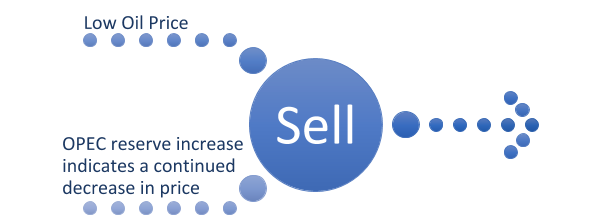
In this next section of our investing series, we will be examining the philosophy side of investing. There are essentially two schools of thought: fundamental and technical. These two approaches to investing are often placed on opposite ends of the spectrum, but most investors fall somewhere in between the two schools. Let’s dive in!
Fundamental
The fundamental school of thought looks to measure the intrinsic value of an investment – that is, the perceived value of an investment, may or may not be the current market price of the investment. Fundamental investors look both forwards and backwards: they look at projected earnings and performance given various factors as well as the historical earnings and performance.
Fundamentalists examine the big picture. They analyze the overall economy, the industry the investment is in, and the individual company the investment is with—from management composition to finances to assets and liabilities. Logic is important in fundamental investing; apply the numbers, not compute them. Fundamentalists are in for the long haul: long time horizons for buying and holding. Gains are made from price corrections, where the current market price is changed to reflect the true perceived value of the investment.
Technical
This school of thought looks at the history of an investment to decide whether or not to act upon it. Technical investors look backwards only, using the history of the investment to make their decisions. Those in this philosophy believe that patterns occur with price, and that models (mathematics) can be used to accurately predict when an investment is at the perfect buy or sell price.
This tradition considers price, volume, and market psychology to make their investing decisions. The reason they don’t consider any other fundamental is because they assume all the fundamentals are already factored into the current price. Technical investing is more numbers based, with a shorter time horizon to consider. Trading is the main focus of technical investors, where the gain is made during the buying and selling of an investment quickly.
Illustration
Looking at philosophy can be rather confusing, so let’s look at a hypothetical example that should help better explain how fundamentalists and technicians think. Take a specific scenario: the oil industry. Let’s say that a certain oil price is down to only $56 a barrel, extremely low. Below is a possible thought process for each philosophy.
Fundamental Investor

The fundamental investor will look at the current oil news. OPEC has had an increase in oil reserves, which could cause the price to continue to fall. Because of this, a fundamental investor may choose to sell their oil investment at this time.
Technical Investor

The technical investor will look at the history of oil prices and look for trends. Historically, prices appear to rise after an extreme low. Because of this, a technical investor may choose to buy an oil investment at this time.
In these illustrations, the two schools of thought have different investing decisions, but this is not always the case. Sometimes, although their methods may be different, both types of investors could come to the same investing decision.
Concluding Investing Philosophy
Here at Creekmur Wealth Advisors, we feel that both investing philosophies have their own merits. We utilize both fundamental and technical investing approaches in our strategies, although there is a heavier lean on the fundamental side.
Creekmur Wealth Advisors believe that looking both into the history of the investment as well as the projected future of the investment can be key to making the best investing decisions. It is important to look at both sides of the spectrum in any philosophy to understand the potential benefits of each.
Securities offered only by duly registered individuals through Madison Avenue Securities, LLC (MAS), member of FINRA/SIPC. Investment advisory services offered only by duly registered individuals through AE Wealth Management, LLC (AEWM), a Registered Investment Adviser. MAS and Creekmur Wealth Advisors are not affiliated entities. AEWM and Creekmur Wealth Advisors are not affiliated entities. Investing involves risk, including the potential loss of principal. A hypothetical example was provided for illustrative purposes only; it does not represent a real life scenario, and should not be construed as advice designed to meet the particular needs of an individuals’ situation. This information is not intended to be used as the sole basis for financial decisions, nor should it be construed as advice designed to meet the particular needs of an individual’s situation.00198667


